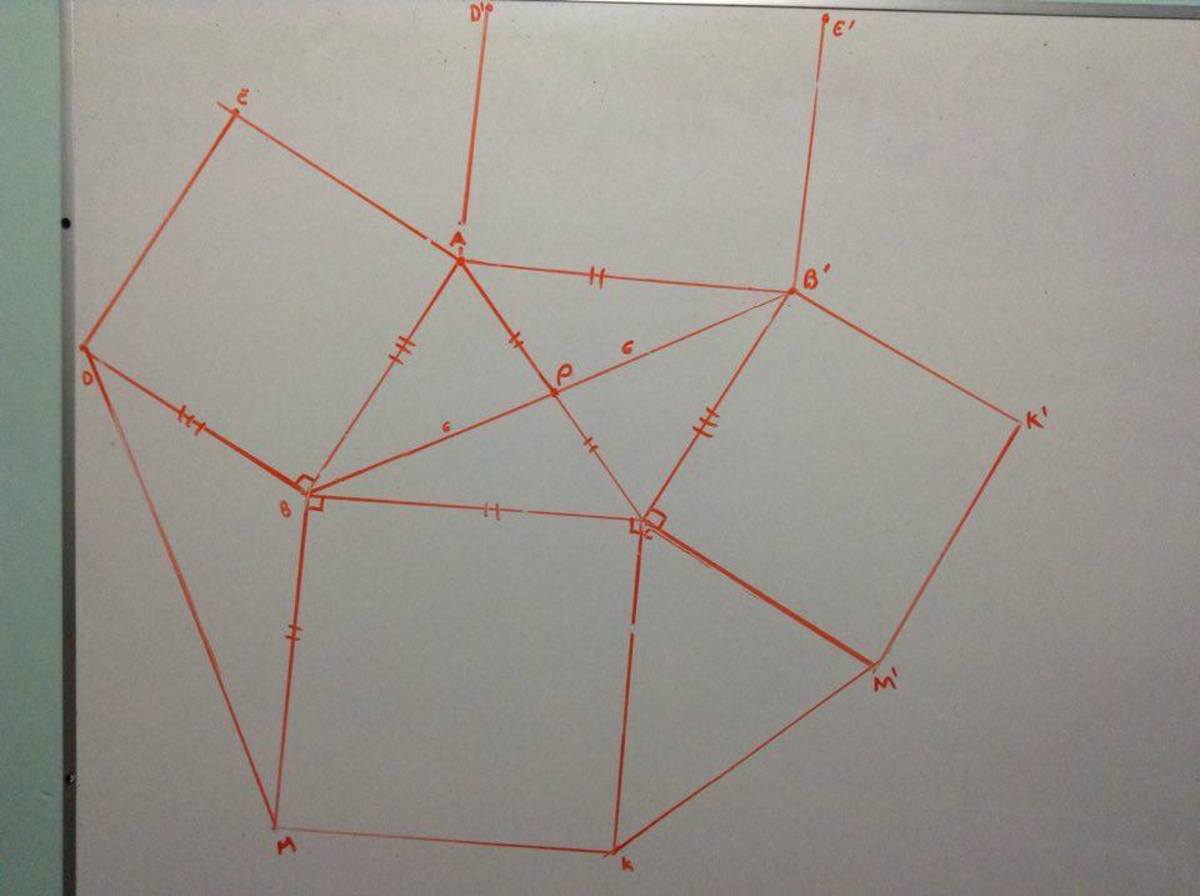Squares and Medians
On the sides A B and B C of Δ A B C , squares A B D E and B C K M are constructed. If the length of median B P is 6 units, find D M .
The answer is 12.
This section requires Javascript.
You are seeing this because something didn't load right. We suggest you, (a) try
refreshing the page, (b) enabling javascript if it is disabled on your browser and,
finally, (c)
loading the
non-javascript version of this page
. We're sorry about the hassle.
4 solutions
Good job, nice solution !
Hint : Setting A B = c , B C = a , A P = C P = 2 b and ∠ A B C = θ , do the following :
1) Apply Appolonius theorem to Δ A B C to find B P w.r.t. a , b , c .
2) Observe that ∠ D B M = ( 1 8 0 ∘ − θ ) , B D = c and B M = a .
2) Apply cosine rule to Δ A B C and Δ B D M to find D M w.r.t. a , b , c .
Now, comparing expressions of B P and D M , we see that D M = 2 B P .
P.S. There is also a Euclidean solution to this problem, and I will leave that for someone else to figure out.
Here is beautiful solution involving almost no computation:
Observe ∠ D B M = 1 8 0 − ∠ A B C
Rotate △ D B M such that B M coincides with B C and A B D forms a straight line.
Thus B P becomes the segment joining the midpoints of A D and A C and hence is half of D M
With the next figure, only extend the median B P and form a parallelogram A B C B ′ . Construct the next squares C B ′ M ′ K ′ and A B ′ E ′ D ′ . Given that A B = B D = C B ′ and B C = C K = A B ′ , then the figure B M K M ′ K ′ B ′ = A E D M K C therefore B B ′ ≅ D M and B B ′ = 2 B P = 1 2 ⟹ D M = 1 2